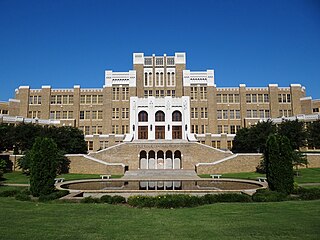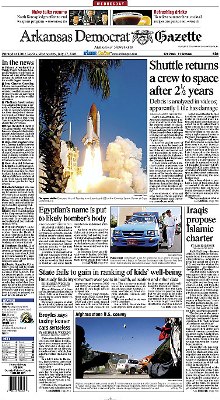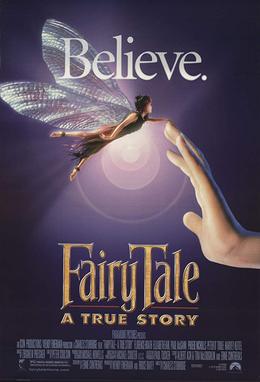
Little Rock Central High School (LRCH) is an accredited comprehensive public high school in Little Rock, Arkansas, United States. The school was the site of the Little Rock Crisis in 1957 after the U.S. Supreme Court ruled that segregation by race in public schools was unconstitutional three years earlier. This was during the period of heightened activism in the civil rights movement.

The Arkansas Democrat-Gazette is the newspaper of record in the U.S. state of Arkansas, printed in Little Rock with a northwest edition published in Lowell. It is distributed for sale in all 75 of Arkansas' counties.

Elizabeth Ann Eckford is an American civil rights activist and one of the Little Rock Nine, a group of African American students who, in 1957, were the first black students ever to attend classes at the previously all-white Little Rock Central High School in Little Rock, Arkansas. The integration came as a result of the 1954 United States Supreme Court ruling Brown v. Board of Education. Eckford's public ordeal was captured by press photographers on the morning of September 4, 1957, after she was prevented from entering the school by the Arkansas National Guard. A dramatic snapshot by Will Counts of the Arkansas Democrat showed the young girl being followed and threatened by an angry white mob; this and other photos of the day's startling events were circulated around the US and the world by the press.

Daisy Bates was an American civil rights activist, publisher, journalist, and lecturer who played a leading role in the Little Rock Integration Crisis of 1957.

Ruby Nell Bridges Hall is an American civil rights activist. She was the first African American child to attend formerly whites-only William Frantz Elementary School in Louisiana during the New Orleans school desegregation crisis on November 14, 1960. She is the subject of a 1964 painting, The Problem We All Live With, by Norman Rockwell.

Carlotta Walls LaNier is the youngest of the Little Rock Nine, a group of African-American students who, in 1957, were the first black students ever to attend classes at Little Rock Central High School in Little Rock, Arkansas, United States. She was the first black female to graduate from Central High School. In 1999, LaNier and the rest of the Little Rock Nine were awarded the Congressional Gold Medal by President Bill Clinton. LaNier was inducted into the Colorado Women's Hall of Fame in 2004 and the National Women's Hall of Fame in 2015.

Minnijean Brown-Trickey is an American political figure who was a member of the Little Rock Nine, a group of nine African American teenagers who integrated Little Rock Central High School. The integration followed the Brown v. Board of Education decision which required public schools to be desegregated.

Thelma Mothershed-Wair is the eldest member of the Little Rock Nine group who attended Little Rock's Central High School following the 1954 Brown vs. Board of Education court case. The Little Rock Nine was a group of nine African American students enrolled in Little Rock Central High School in 1957. Their enrollment was followed by the Little Rock Crisis, in which the students were initially prevented from entering the racially segregated school by Orval Faubus, then Governor of Arkansas. They then attended after the intervention of President Dwight D. Eisenhower.

FairyTale: A True Story is a 1997 fantasy drama film directed by Charles Sturridge and produced by Bruce Davey and Wendy Finerman. It is loosely based on the story of the Cottingley Fairies, and follows two children in 1917 England who take a photograph soon believed to be the first scientific evidence of the existence of fairies. The film was produced by Icon Productions.
Ellen Tarry was an African-American journalist and author who served as a minor figure in the Harlem Renaissance. Her Janie Belle (1940) was the first African-American picture book, and her other works include further literature for children and young adults as well as an autobiography.
Dorothy "Dot" Counts-Scoggins is an American civil rights pioneer, and one of the first black students admitted to the Harry Harding High School.
Elizabeth Paisley Huckaby was an educator.

The Daisy Bates House is a historic house at 1207 West 28th Street in Little Rock, Arkansas, USA. It is significant as the home of Arkansas NAACP president Daisy Bates, and for its use as a command post for those working to desegregate the Little Rock Central High School during the desegregation crisis of 1957–1958. It was a sanctuary for the nine students involved. It was declared a National Historic Landmark in 2001.
David Margolick is an American journalist. He is long-time contributing editor at Vanity Fair. Margolick has held similar positions at Newsweek and Portfolio.com. Prior to joining Vanity Fair he was a legal affairs reporter at The New York Times, where he wrote the weekly “At the Bar" column and covered the trials of O.J. Simpson, Lorena Bobbitt, and William Kennedy Smith. In his fifteen years at the Times, the paper entered his work four times for the Pulitzer Prize. He remains a frequent contributor to The New York Times Book Review. His work has also appeared in The New York Review of Books, Tablet, and The Forward.

Hazel is a primarily female given name meaning "hazel", from the name of the tree or the color. It is derived from the Old English hæsel. It became a popular name in English-speaking countries during the 19th century, along with other names of plants or trees used for girls.

The Little Rock Nine were a group of nine African American students enrolled in Little Rock Central High School in 1957. Their enrollment was followed by the Little Rock Crisis, in which the students were initially prevented from entering the racially segregated school by Orval Faubus, the Governor of Arkansas. They then attended after the intervention of President Dwight D. Eisenhower.
Grace Lonergan Lorch was a teacher and civil rights activist best known for her work as a white escort for the Little Rock Nine.

In the United States, school integration is the process of ending race-based segregation within American public and private schools. Racial segregation in schools existed throughout most of American history and remains an issue in contemporary education. During the Civil Rights Movement school integration became a priority, but since then de facto segregation has again become prevalent.
The history of the 1954 to 1968 American civil rights movement has been depicted and documented in film, song, theater, television, and the visual arts. These presentations add to and maintain cultural awareness and understanding of the goals, tactics, and accomplishments of the people who organized and participated in this nonviolent movement.
Will Counts (Ira Wilmer Counts Jr.; August 24, 1931—October 6, 2001) was an American photojournalist most renowned for drawing the nation's attention to the desegregation crisis that was happening at Little Rock Central High School in Little Rock, Arkansas in 1957. Documenting the integration effort in the 1950s, he captured the harassment and violence that African Americans in the South were facing at this time. He was nominated for the Pulitzer Prize for these photographs.













